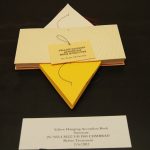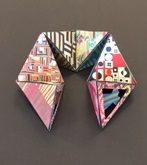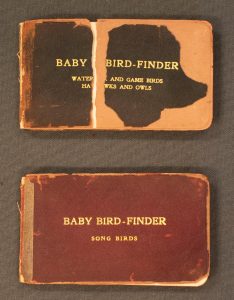The Fix (Preservation)
The Fix – Housing Artist’s Books
 The Book Conservation Lab periodically receives artist’s books from the Cooper-Hewitt National Design Museum Library with specia
The Book Conservation Lab periodically receives artist’s books from the Cooper-Hewitt National Design Museum Library with specia
The Fix: Museum Day Live – Exploring Careers in Libraries and Preservation
In anticipation of Smithsonian Libraries’ participation in this year’s Museum Day Live events on Saturday March 12th, we wanted to highlight Library Preservation work at the Book Conservation Lab here at Smithsonian Libraries, and draw attention to the varied interests and skills that are inherent to Preservation work and are important and driving forces in preserving library collections for the future.
The Fix: Custom Protection for a Flexagon Book

Holiday Cooking with Hannah Glasse
The holiday season has kitchens humming around the world, whether it’s churning out a favorite cookie recipe or prepping a celebratory meal with loved ones. In the 1700s, kitchens in England regularly consulted Hannah Glasse’s The Art of Cookery Made Plain and Easy for tried-and-true recipes. Among Glasse’s readers was a food lover near and dear to our hearts: Smithsonian founder James Smithson. Whether he knew it or not, Smithson had a bit in common with Glasse.
The Hewitt Sisters’ Diaries: Conservation and Digitization Behind-the-Scenes
This post was written by Katie Wagner, Senior Book Conservator, David Holbert, Digital Imaging Specialist, and Jacqueline E. Chapman, Head, Digital Library and Digitization. Learn more about the diaries of the Hewitt Sisters in a previous post by Jennifer Cohlman Bracchi.
The Road to Recovery for a Chinese Sutra
In preparation for a Chinese Object Study Workshop hosted by the National Museum of Asian Art (NMAA) in late August, I selected a sutra in the Freer and Sackler Library to illustrate the evolution in printing of Chinese books. The rolled sutra is Baoqieyin Dharani sutra (宝箧印陀罗尼经) and was printed in 975 CE, likely making it the oldest printed item in our library collections.
Smithsonian Libraries and Archives Opens “Nature of the Book”
Join us for a virtual tour on Tuesday, November 15th!
The Smithsonian Libraries and Archives presents a new exhibition, “Nature of the Book,” at the Smithsonian’s National Museum of Natural History November 11. “Nature of the Book” will be on display through March 17, 2024.
When Middle East Met West
The Smithsonian Libraries and Archives exhibition, Nature of the Book, looks at the natural materials and evolving techniques in bookbinding from 1450-1850 as illustrated by our collections.
A Better Understanding of Atlas Bookbinding Techniques
Smithsonian Libraries and Archives Preservation Team recently had the opportunity to participate in a three-day workshop exploring various binding techniques for atlas structures at our Book Conservation Lab in Landover, MD. The workshop was taught by Katherine Kelly, Senior Book Conservator at the Library of Congress where she has taught this course several times. Guided by Katherine, our preservation staff constructed atlas models with a variety of map folding patterns, attachment techniques, guarded structures, and compensation methods.
The Fix: Reusing Original Leather in a New Rebinding
#AskAConservator Day Recap
We’re always in awe of our book conservators.
New Video Series Highlights Conservation Treatments
Curious about our conservators’ favorite books or trickiest treatments? While they’ve had to step away from the bench during the pandemic, our Preservation Services staff have been hard at work describing some of their remarkable conservation techniques in video form.
A Digitization Journey, a Knowledge Journey: Personal and Professional Insights From My Work on Polynesian Researches
Na au iki a me na au nui o ka ʻike: The little and the large currents of knowledge.
Upcoming Event: Ask a Conservator – Emergency Management
Ask a Conservator: Emergency Management
Wednesday, June 23 at 5 pm ET
Stewards of the Hungerford Deed
When the Smithsonian Institution was founded “for the increase and diffusion of knowledge,” it was difficult to know how impactful this mission would still be 175 years on. To this day, the Smithsonian Libraries and Archives strives to further this goal, sharing our knowledge to make discoveries and expand our understanding together with you, our community of supporters.
In Search of the Perfect Blue
The color blue has had a long history in the Western world. The ever-changing role of blue has been used in bookbinding and the book arts to color manuscripts, maps, and scientific illustrations. Colorants used in inks, paints, and dyes have come from a variety of natural sources, including clays, gems, plants, and insects. Blue pigments were first made from imported minerals from Central Asia, eventually shifting to local resources within Europe.

